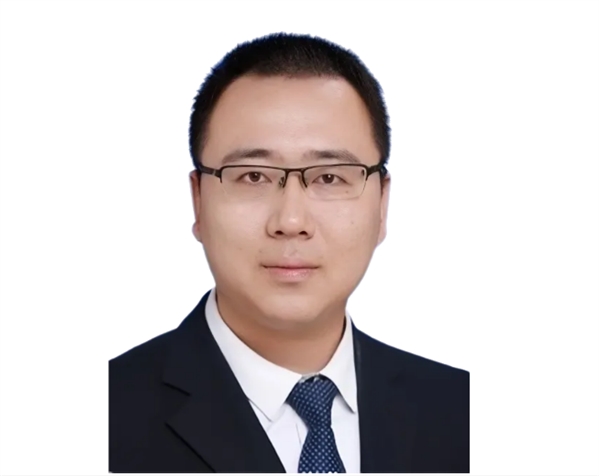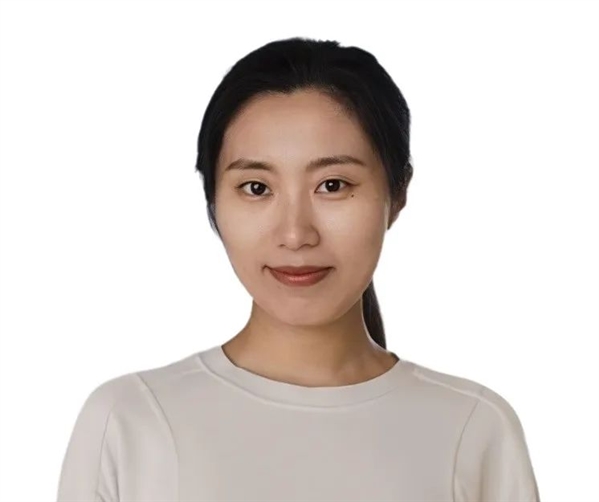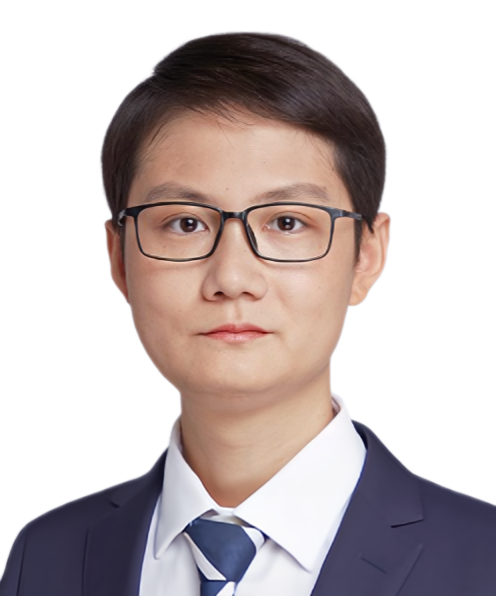|
|
|
|
|
浙江大学、路易斯安那州立大学等三位专家讲述跨学科创新赋能精准医疗 |
|
|

直播时间:2025年5月6日(周二)20:00-21:30
直播平台:

科学网APP
https://weibo.com/l/wblive/p/show/1022:2321325163322184958095
(科学网微博直播间链接)

科学网微博

科学网视频号
北京时间5月6日晚八点,iCANX Youth Talks第96期邀请到了深圳市中科先见医疗科技有限公司创始人吴天准,浙江大学博士生导师刘帅,路易斯安那州立大学助理教授蔡琪担任主讲,Nextleap.LLC高正宏担任研讨嘉宾,电子科技大学副教授龚天巡担任主持人,期待你一起加入这场知识盛宴。
【嘉宾介绍】

吴天准
深圳市中科先见医疗科技有限公司
跨界创新的半导体芯片驱动精准生物检测普惠化
【Abstract】
The precision, mass production and powerful integration capacity of semi-conductor technology have endowed a fully new perspective and system reconfiguration ability for precision biomedical detections based on single molecule counting. This talk will share our innovative researches and industrial practices in Shenzhen, China in the recent 10 years. We have established a new single molecule chip platform with new roadmap, and explored its potential in ultra-sensitive detection and point-of-care technologies (POCT). We will exhibit the highly integration and digitalization potential of the advanced biochips, especially the huge advantages for the population of bio detection in the field of high-sensitivity, standardization, miniaturization and low-cost. New concept to realize “A chip is an instrument, as well as a consumable” can be achieved based on the world-first high-efficiency monodisperse particle array and low-cost, high-precision multiple-casting processes, to enable the fast spread of nowadays expensive single-molecule detection to scientific research, primary health care even finally at-home self-testing.
半导体技术的精密、批量生产和强大的多功能集成能力,为基于单分子计数的精准生物及医学检测领域提供了全新视角和系统重构能力。本次报告将介绍团队近10年在中国深圳的创新研究及生物医学检测的产业实践。我们综合采用MEMS/微流控/微纳工艺等半导体技术与仿生表界面的交叉研究,构建了从0到1的全新技术路线的单分子芯片平台,并探索其在超灵敏检测、超多重筛选及即时检测(POCT)的潜力。我们将展示这种生物半导体芯片具有高度集成化、数字化能力,特别在极广泛的地球生物检测领域具备超精准、标准化、微型化、低成本的巨大潜力。依靠国际首创的高效单分散颗粒阵列和低成本、高精密的多重转印工艺,逐步实现“芯片即仪器,芯片即耗材”的新理念,助力目前昂贵的超敏或多重免疫检测短期内国产替代,快速普及到科研、基层医疗乃至居家自测。
【BIOGRAPHY】
Tianzhun Wu obtained the bachelors and masters degree from the Department of Precision Instruments at Tsinghua University, and the Ph.D. from the University of Tokyo. After that, he served as a postdoctoral researcher at the University of Tokyo and Osaka University, and a lecturer at Sun Yat-sen University. In 2013, he joined the Shenzhen Institutes of Advanced Technology, Chinese Academy of Sciences (SIAT CAS) as an associate professor, where he founded the Center for Micro/Nano Systems and Bionic Medicine. In 2016, he was promoted to full professor and Ph.D. supervisor. In terms of industrialization, in 2018 he founded CAS-Envision Medical Technology Company and in 2021 the subsidiary company Shenzhen Bloom Origin Semiconductor. In 2022 he was granted the financial support funded by the Nanshan government to lead the IVD Innovation Platform, National Technology Innovation Center in Guangdong-Hong Kong-Macao Greater Bay Area. So far his accumulation of R&D grant budget is about 180 million RMB in the area of semiconductors and medical devices. Dr. Wu has nearly 20 years of R&D experience and industrial practice in semiconductors and biomedicine, with research interests including BioMEMS, MicroTAS, nanomaterials, biomimetic interfaces, and neuroelectronics. He has published more than 60 SCI papers and over 100 EI papers, and holds more than 140 domestic and international patents (more than 50 among them have been transferred or industrialized). He has been granted as an outstanding youth of the Guangdong Natural Science Foundation and Caliber B of the Shenzhen Peacock Plan. He has once served as a technical committee member (TPC) of IEEE MEMS, senior member of IEEE, a director of the Chinese Society of Micro and Nano Technology, a executive committee member of the Health Data and Digital Medicine Branch of the CPAM, and so on.
吴天准,清华大学精密仪器系本科、硕士,东京大学博士,历任东京大学及大阪大学博士后、中山大学讲师。2013年作为副研究员加入中国科学院深圳先进技术研究院医工所,创办微纳系统与仿生医学研究中心,2016年破格晋升研究员。在产业化方面,2018年创办中科先见医疗科技公司,2021年孵化芯片子公司深圳市勃望初芯半导体,2022年获批主持南山政府资助的粤港澳大湾区国创中心IVD创新平台项目,累计承担半导体及医疗器械类研发项目金额近1.8亿。吴博士有近20年的半导体及生物医学的研发经验及产业化实践,研究兴趣包括生物微机电系统(BioMEMS)、微全分析系统(MicroTAS)、纳米材料、仿生界面、神经电子等。他发表了60余篇SCI论文,100余篇EI论文,拥有逾140个国内外专利,其中50余专利已授权并产业化。曾入选广东省自然科学基金杰出青年和深圳市孔雀计划B类,担任IEEE MEMS的技术委员(TPC)、IEEE高级会员、中国微米纳米技术学会理事、中国医促会健康数据及数字医学分会常委等。

刘帅
浙江大学
mRNA靶向递送系统研究
【ABSTRACT】
mRNA therapeutics have shown substantial potential in applications of mRNA vaccines, CRISPR/Cas gene editing, and protein replacement therapies. However, vectors are required for mRNA function, since these nucleic acids encounter difficulty in entering the targeted organs, tissues, and cells of interest. Therefore, targeted, efficacious, and safe mRNA delivery have remained challenging, hindering the advancement and clinical translation of current mRNA drugs. Lipid nanoparticles (LNPs) have been regarded as the most clinically advanced mRNA carriers. Thus far, most LNPs only mediate mRNA expression in the liver, and extrahepatic delivery remains to be solved for diverse disease treatment. This presentation will introduce how our research group design biomaterials for targeted mRNA delivery. The specific contents include: (1) We designed a novel ionizable phospholipid (iPhos) library, and the formulated LNPs enabled organ selective (liver, lung, or spleen) mRNA delivery in vivo. The structure-activity relationships revealed that iPhos chemical structures and helper lipid species could both control the in vivo efficacy and organ selectivity. (2) For the delivery and application requirement to immune organs, we proposed non-LNP strategies to deliver mRNA, including zwitterionic polymers and one-component secondary-amine lipids. These biomaterials enabled efficacious and safe mRNA expression in the spleen, demonstrating great immunotherapy potential. (3) Current extrahepatic delivery systems are unable to fully achieve simultaneous organ-specific accumulation and translation. By removing cholesterol and modulating intrinsic LNP components, concurrent mRNA accumulation and translation was achieved in the lung. All above research achievements about targeted mRNA delivery systems show great promise in mRNA therapeutics.
mRNA疗法在疫苗开发、基因编辑和蛋白质替代疗法等领域展现出广阔的应用前景。但是,mRNA药物无法自发进入特定的器官、组织和细胞,研发靶向、高效、安全的mRNA递送系统十分具有挑战,阻碍着mRNA疗法的临床应用。迄今为止,脂质纳米颗粒(LNPs)是临床最为先进的mRNA递送载体,但多数LNPs仅能靶向肝脏,因此亟需开发肝外递送系统来应对众多疾病对mRNA疗法的需求。本次演讲将介绍我们课题组在生物材料方面的设计,以实现mRNA靶向递送。具体内容包括:(1)设计了一类新型可电离磷脂,构效关系研究揭示磷脂结构和辅助脂质种类均影响体内mRNA递送效率和器官选择性;(2)为递送mRNA至免疫器官,我们采用了非LNP的策略,包括设计两性聚合物和单组分仲胺脂质载体。这些生物材料可将mRNA有效递送至脾脏,展现出免疫治疗潜力;(3)目前肝外递送系统无法同时实现器官特异性mRNA聚集和翻译。我们去除胆固醇,重新调控LNPs配方,实现了肺靶向mRNA聚集和翻译。上述mRNA靶向递送成果有望应用于未来的mRNA疗法。
【BIOGRAPHY】
Dr. Shuai Liu is a Research Professor of Hundred Talents Program and doctoral supervisor at the College of Pharmaceutical Sciences, Zhejiang University. He was awarded MIT Technology Review Innovators Under 35 (TR35) Asia Pacific in 2022. He received his B.S. and Ph.D. degree from College of Chemistry, Nankai University, and worked as a Postdoctoral scholar in UT Southwestern Medical Center. In 2022, he joined the College of Pharmaceutical Sciences, Zhejiang University. Focused on gene therapy, his research aims to develop novel lipid nanoparticles and macromolecules for mRNA delivery, for the purpose of treating cancer and genetic diseases. Dr. Liu has published more than 40 peer-reviewed papers in Nature Materials, Nature Communications, Journal of the American Chemical Society, Angewandte Chemie International Edition, etc.
刘帅,浙江大学博士生导师,《麻省理工科技评论》亚太区“35岁以下科技创新35人”。本科和博士毕业于南开大学化学学院,毕业后于美国德克萨斯大学西南医学中心从事博士后研究工作,2022年入职浙江大学药学院。研究方向聚焦于基因治疗,发展新型脂质纳米颗粒、高分子等mRNA递送体系,系统研究对癌症、遗传病等重大疾病的治疗应用。目前已在 Nature Materials, Nature Communications, Journal of the American Chemical Society, Angewandte Chemie International Edition等国际著名刊物发表论文四十余篇。

蔡琪
路易斯安那州立大学
突破血脑屏障:靶向药物治疗的前沿创新
【ABSTRACT】
Located at the interface between circulation and brain parenchyma, the BBB functions as a protective and regulatory interface to allow the exchange of essential nutrients while excluding the entry of most hydrophilic and large molecules. The BBB is formed by the tight-junction complex at the interfacial leaflets of brain endothelial cells (ECs) and by low levels of transcytosis through the endothelium. The BBB is dynamically regulated by pericytes and astrocytic end-feet processes and interacts with microglia and neurons to constitute the neurovascular unit. In the development of therapeutics for CNS disorders, the BBB poses a formidable challenge for the brain delivery of systemically administered drugs. It has been estimated that the BBB excludes or limits the delivery of 98% of small-molecule and nearly all large-molecule drugs to subtherapeutic levels. Therefore, approaches to increase the BBB permeability are essential to advance therapeutics for CNS diseases.This presentation will showcase the development of innovative technologies for delivering drugs into the brain. The specific topics include: (1) reversible modulation of the blood-brain barrier using laser stimulation of molecularly targeted nanoparticles; (2) enhancing glioblastoma drug delivery in mice through optically mediated BBB modulation; (3) a portable and site-specific BBB modulation strategy utilizing high-definition transcranial direct current stimulation combined with piezoelectric nanomaterials. Together, these strategies represent promising advancements toward overcoming the challenges of brain drug delivery and improving therapeutic outcomes for central nervous system disorders.
位于循环系统与脑实质之间的界面,血脑屏障作为一个保护性和调节性的屏障,允许必需营养物质的交换,同时阻止大多数亲水性和大分子物质进入脑组织。血脑屏障 主要由脑内皮细胞之间界面处的紧密连接复合体形成,并通过低水平的跨内皮转胞作用来限制物质通透性。血脑屏障 的功能受到周细胞和星形胶质细胞足突的动态调控,并与小胶质细胞和神经元相互作用,共同构成神经血管单元。在中枢神经系统疾病治疗药物的开发中,血脑屏障 对系统性给药的脑部递送构成了严峻挑战。据估计,血脑屏障会阻止或显著限制约 98% 的小分子药物以及几乎所有大分子药物进入脑部,且浓度达不到治疗水平。因此,提升血脑屏障通透性的策略对于推动中枢神经系统疾病治疗的发展具有关键意义。本报告将展示我们在脑部药物递送方面所开发的创新技术。具体内容包括:(1) 利用激光刺激分子靶向纳米颗粒,实现血脑屏障的可逆性调控;(2) 通过光学手段调控血脑屏障,增强小鼠胶质母细胞瘤药物递送效果;(3) 基于高分辨率经颅直流电刺激结合压电纳米材料,开发出便携且靶向性强的血脑屏障调控策略。这些策略为突破脑部药物递送的障碍、提升中枢神经系统疾病的治疗效果带来了新的方向。
【BIOGRAPHY】
Dr. Qi Cai joined the Department of Biological and Agricultural Engineering at Louisiana State University in 2023 as a tenure-track assistant professor. Dr. Cai received her B.S. in Applied Chemistry from Beijing University of Chemical Technology (2013) and her M.Sc. (2015) and Ph.D. (2018) in Chemistry from University College Dublin. Before joining LSU, she was a postdoctoral research associate in the Department of Mechanical Engineering at the University of Texas at Dallas. Her primary research focuses on studying the tumor microenvironment of glioblastoma and developing novel therapeutic targets, as well as targeted drug delivery to the central nervous system. She has published papers in international journals such as Nature Communications, ACS Nano, Nano Letters, and Nanoscale Horizons. She has also received several awards, including the Irish Government Postgraduate Scholarship, the International Brain Barriers Society Poster Award, the Keystone Symposia Scholarship, and the Baxter Young Investigator Award. Her research is funded by the Louisiana Board of Regents and the Louisiana State University Provost’s Fund for Innovation in Research Program.
蔡琪,美国路易斯安那州立大学生物与农业工程系助理教授。2013年毕业于北京化工大学应用化学专业,2015年和2018年分别于爱尔兰都柏林大学化学系获得硕士和博士学位。毕业后于美国德州大学达拉斯分校机械工程系从事博士后研究工作,并于2023年加入美国路易斯安那州立大学。她的主要研究方向包括脑胶质瘤微环境及其治疗靶点,以及中枢神经系统的药物靶向递送。在Nature Communications, ACS Nano, Nano Letters, Nanoscale Horizons 等国际期刊上发表多篇论文,并曾获得爱尔兰政府博士生奖学金,国际脑屏障学会海报奖, Keystone Symposia 奖学金, Baxter 青年研究员奖等奖项。她于2024年获得路易斯安那州董事会支持基金以及路易斯安那州立大学教务长基金。
【主持人】

龚天巡
电子科技大学
【研讨嘉宾】

高正宏
Nextleap.LLC
特别声明:本文转载仅仅是出于传播信息的需要,并不意味着代表本网站观点或证实其内容的真实性;如其他媒体、网站或个人从本网站转载使用,须保留本网站注明的“来源”,并自负版权等法律责任;作者如果不希望被转载或者联系转载稿费等事宜,请与我们接洽。